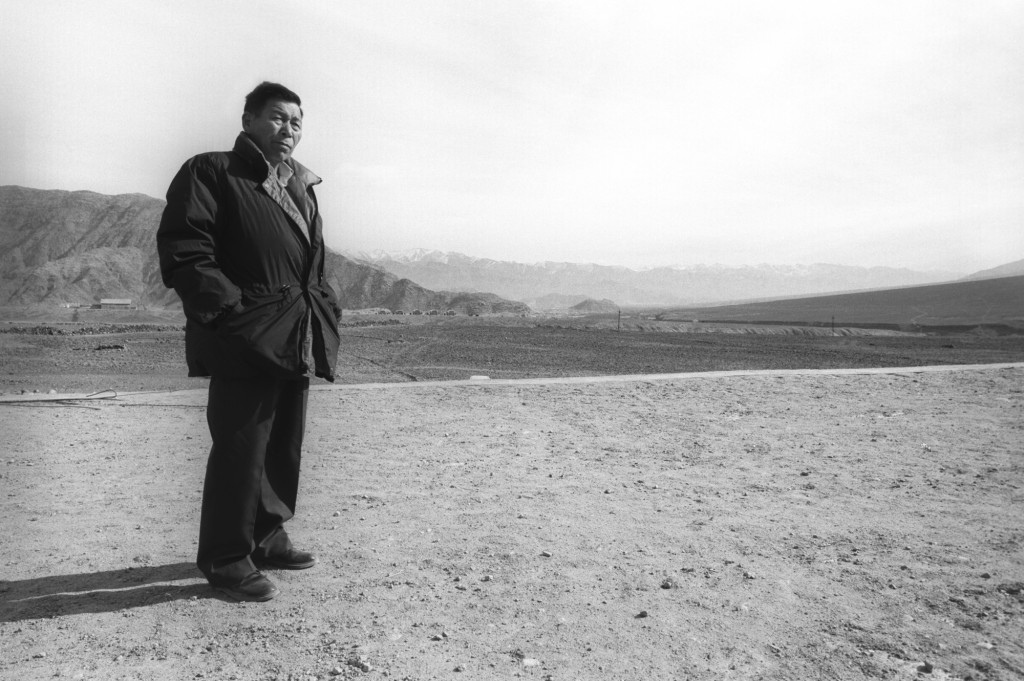
Chewang Norphel at Phey Village, near Leh, Ladak. December 2004
Born in 1936 to Tibetan parents, Norphel hails essay from Skarra village, 2.5 kms away from Leh in Ladakh. All 100 families of his village have traditionally been subsistence farmers, cultivating wheat, barley, mustard and peas. As a child, he tended cows and yaks, while his father tilled the hard and crusty soil. Tucked away in the Himalayas between Pakistan and China, Ladakh is a sweeping expanse of land – rich in history, stark in beauty, colourful in culture and awe-inspiring in its Buddhist heritage.
But misery clouded this Shangri La. Ladakh’s greatest ghostwriting enemy is neither its remoteness nor its winter chill, but it’s aridity. It’s a treacherous case of scarcity amidst abundance. Melting snows generate millions of gallons of water. But as it flows into the mountain streams too late in the year, most of the water goes waste. Understandably, nothing grows in Ladakh in winter as it’s too cold. Cultivation is limited to the extremely short season of spring and summer warmth. Spring arrives in April but by the time the great Himalayan glaciers melt to fill the mountain streams, it is June.
Too much, too late!
Ladakhi farmers need water in April to first moisten the dry, winter chapped fields. Then they can plough and plant the seeds. And then in June, the fields can be watered by the gurgling mountain streams. Except there is no water in April because the glaciers are still frozen. This predicament trapped the villagers in a perennial cycle of poverty. They were forced to wait until June to moisten, plough and plant the seeds. All this had to be rushed through in a compressed timeframe. Thus, the earth was not sufficiently prepared, dooming the fields to low and erratic yields, even crop failures.
The mighty Sindhu flows at a lower level throughout Ladakh. Water has to be lifted to a height of 100+ft for people to be able use it. In this rugged and power starved area, this is a very difficult task. The only hope for people is Norphel’s artificial glaciers.
If only the villagers could get water in April! For Chewang Norphel, it became an obsession to sit in his garden during his holidays and ponder over this conundrum, while idly watching the water drip to the ground from the lone village tap. The tap had to be kept open in winter to let the water flow through so that it did not freeze and burst the pipe. So the water dripped away, wasting into the earth, forming a large pool that became a sheet of ice in winter.
Eureka!
That’s how Norphel hit upon his simple but brilliant idea. What if he stored the plentiful water from the melted snow someplace close to the village all through summer and autumn so that it could form a glacier in winter? This man-made glacier would then melt in spring to provide the much needed water for the villagers at the right time. The natural Himalayan glaciers were located at about 18,000 feet. The solution would be to form glaciers near their villages at about 13,000 feet so that it would melt earlier in the year, and thus provide water for his villagers in April.
The idea struck him in 1987. A junior engineer in J & K government’s rural department, Norphel put all the knowledge gained from his Lucknow civil engineering diploma course, local work experience and meager resources to translate his idea into action on a trial basis in water-starved Phutse village, 80 kms from Skarra. He dug and built diversion canals to channel the water from main mountain streams to suitable water catchment sites about four kms away from the village. He designed the reservoirs in a series of steppe formations, locating them in mountain shade so that the water would remain frozen in winter to form large glaciers. From the glacier, feeder canals took the water back to the natural mountain streams that irrigated the villages.
Norphel’s low cost glaciers turned out to be an ingenious way of solving a perennial problem. The Phutse glacier cost a meager Rs.90,000. Local villagers did the manual work and the materials used were entirely local – stones, rocks, earth. Thus the solution was both inexpensive and environmentally sound.
Norphel has now built seven glaciers, the smallest 500 feet long in Umla to the largest 2 km long one in Phutse, Depending on the topography, the width of the glacier ranges from 50 to 200 feet; the depth from 2 to 7 feet.
As a government servant, Norphel could not change the world or even his state. But he changed his local environment, using whatever little expertise and resources he had. Unlike millions of others, he was not content to merely draw a salary. He wanted to use his position, education, skills and experience to improve the lives of the people around him. His constant interaction with the people very early in his career convinced him that water scarcity was public enemy number one in his homeland. So he used his job to tackle the problem. As a civil engineer, he built tanks, bridges, irrigation canals and other public works that have made life easier for the local inhabitants. During his career, he built over 300 canals, some of them in tough, stony terrain comprising of vertical rocks, to irrigate 20,000 acres and benefiting 75% of Leh’s 117,000 inhabitants. He had to make do with little money and rudimentary equipment for digging and blasting. He had to coax villagers to volunteer their labour.
But his determination compensated shortages and inadequate facilities. He recalls building the first suspension wooden bridge in the arid Zanskar area. There was no timber available as the high altitude does not permit vegetation. He had to transport the logs of wood and rocks manually and on mules. The villagers at first refused to lift the boulders, so heavy were they. So Norphel carried them himself, shaming the others to join in.
After he retired from government service, Norphel took up a job as the Project Engineer of the Leh Nutrition Project, an NGO set up in 1979 by Britain’s Save the Children Fund. With funding now coming from several national and international agencies, the Project has expanded its activities to cover child education and empowerment, watershed development programs and HIV/AIDS.
Norphel needs no studies to convince him of the threat of global warming. With growing alarm, he watches the mighty Himalayan glaciers shrink and recede further from his village with every passing year. In his childhood, the Stok glacier covered half the distant mountain range that rimmed his horizon. Now the glacier is a mere icing on the crest. He yearns to restore the ice caps by building more glaciers. And he sees the urgent need to build reservoirs in every one of Leh’s 112 villages to harness the water instead of letting it all go waste into the mighty Indus River in autumn. India, he notes, spends Rs.2 crores a day on maintaining its troops on the Siachen glacier. One day’s military expenditure on this icy wasteland could build 50 glaciers in Ladakh!
But Norphel sees no grandeur, let alone divinity in his achievements. He remains simple and unassuming even after winning accolades and prestigious national and international awards. What does he think helped him succeed in his efforts? Says he with alacrity: “People’s cooperation”. You have to make people share your vision, participate in your dream. “Without people’s cooperation, you cannot achieve anything.
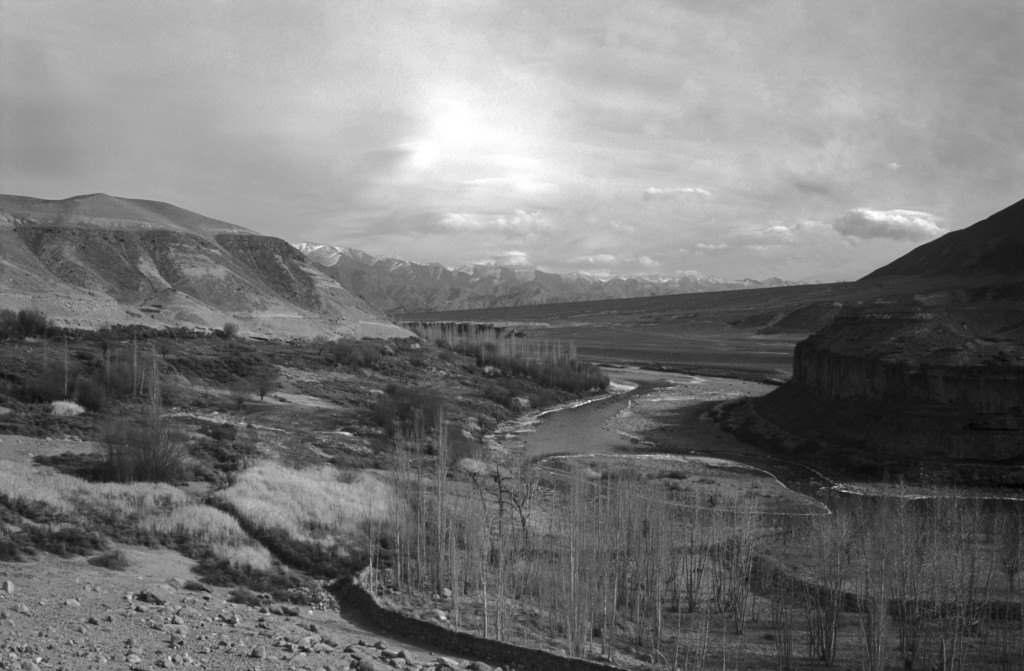
The mighty Sindhu flows at a lower level throughout Ladakh. Water has to be lifted to a height of 100+ft for people to be able use it. In this rugged and power starved area, this is a very difficult task. The only hope for people is Norphel’s artificial glaciers.
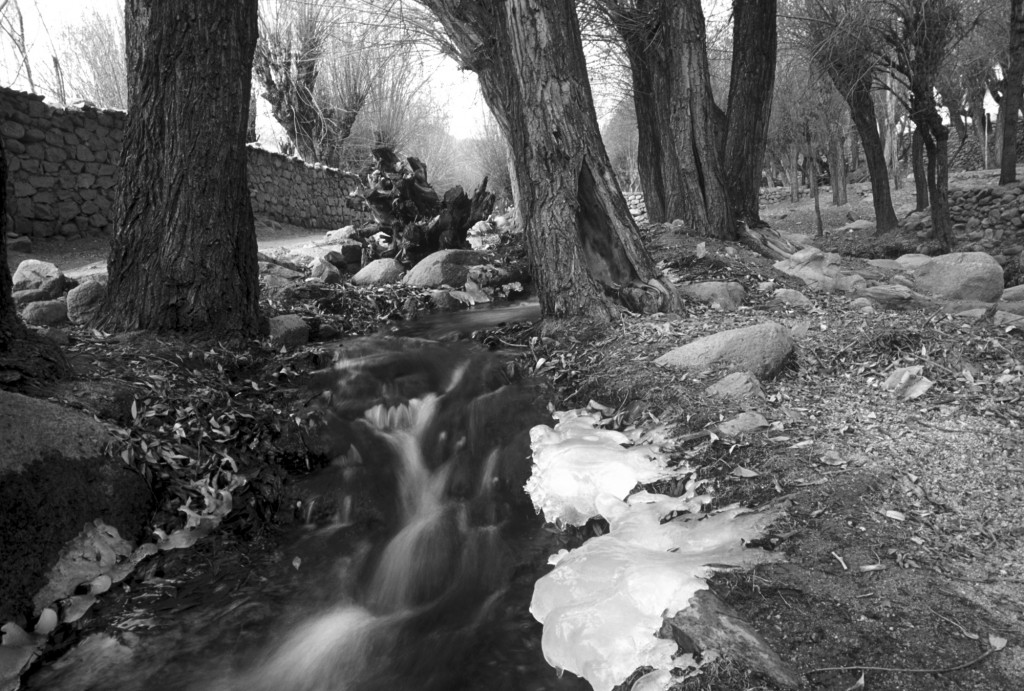
All through the winter even when the temperature is -15 degree Celsius, glaciers melt as the Sun comes up. This melt does not refreeze as it flows down, due to the velocity it acquires. It just flows down the mountain and goes into the Indus and away.
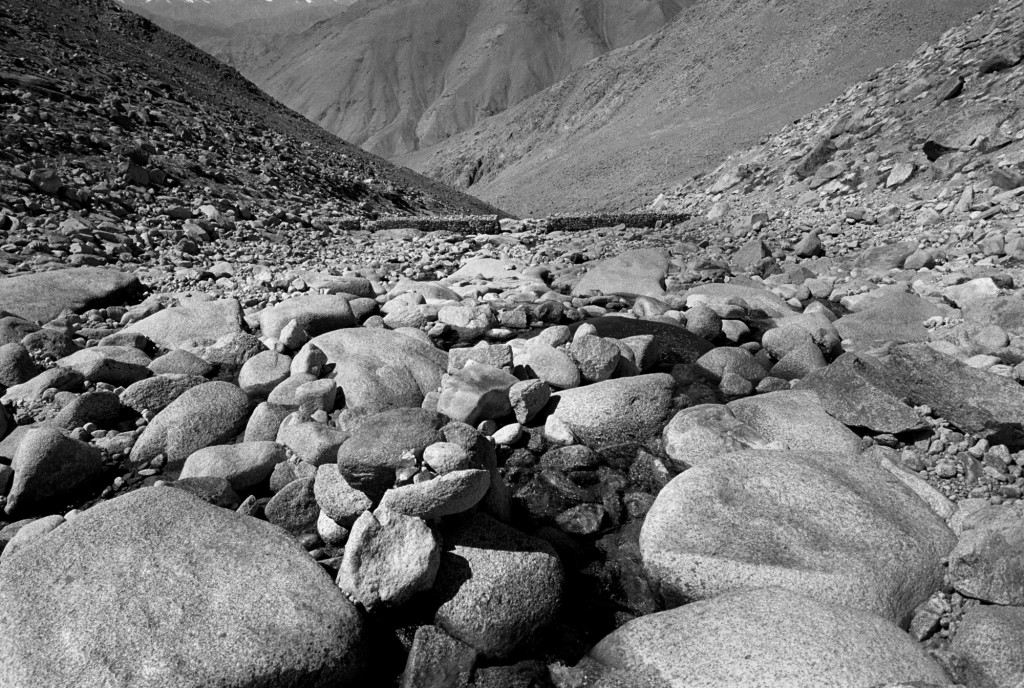
Changla, at about 15000ft above MSL. This is a reservoir built to check the flow of water from the glaciers. Norphel’s simple technique checks the flow of water by using diversion canals at heights of 12000-15000 ft. He builds simple bunds using stones and very little mortar. They are held together by an iron mesh. Water thus collected in the reservoir is let down slowly through narrow outlets. Reduction in the speed of the flow helps to refreeze it.
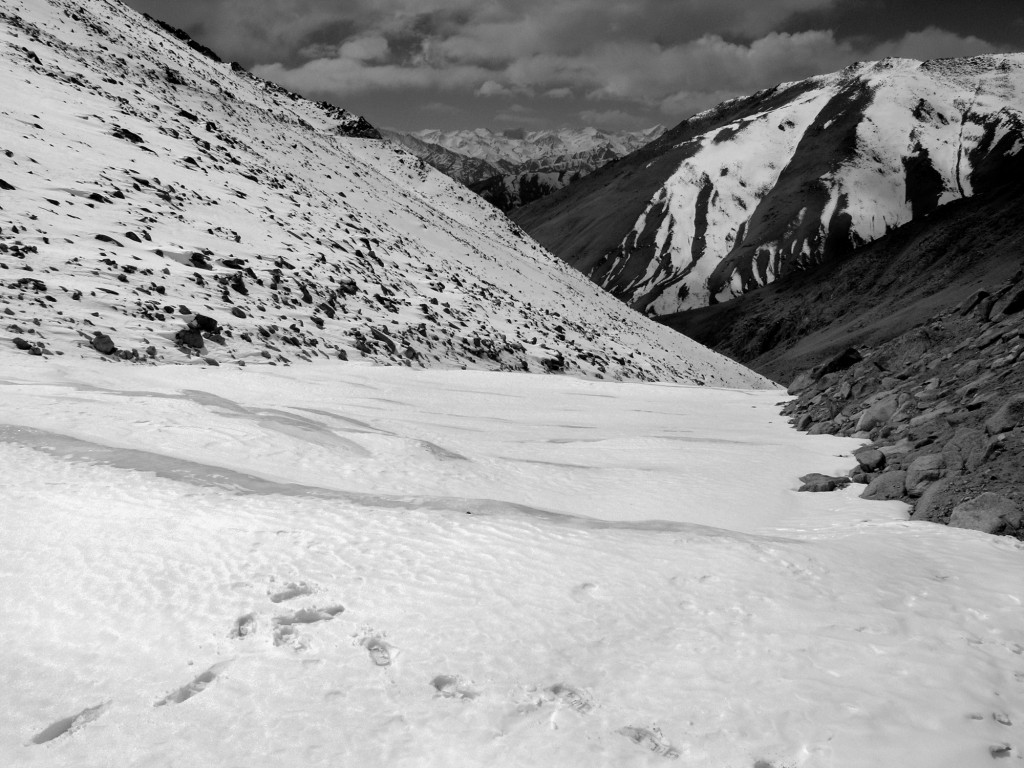
Changla artificial glacier as seen in February 2006! Winter was receding. This is the highest watershed project in the world.
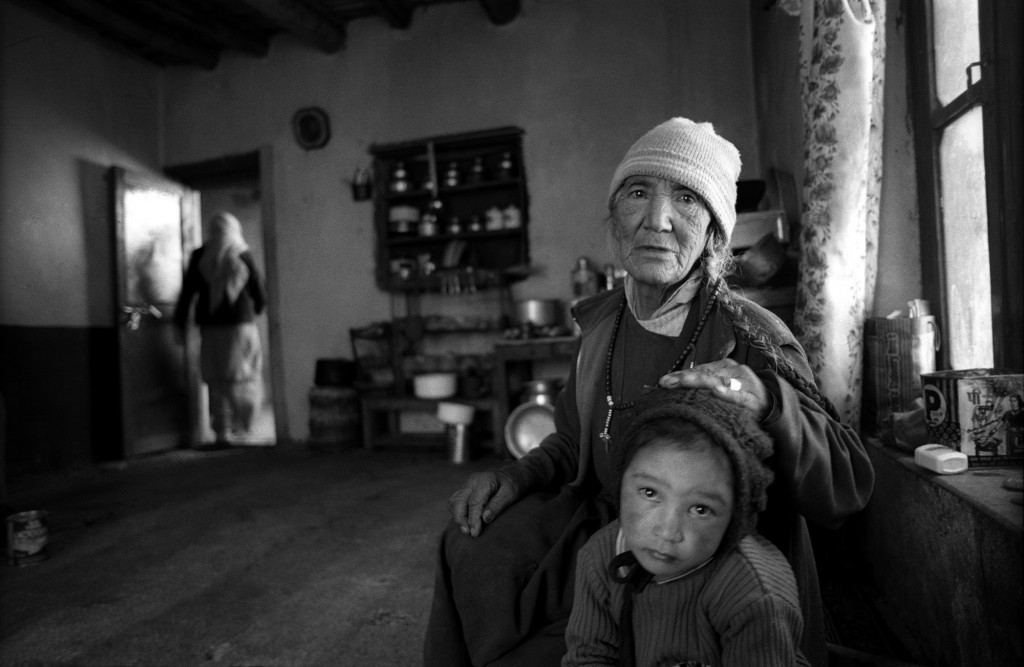
Spalding family at Sakthi village, downstream of Changla artificial glacier, melt water of which helps the villagers of Sakthi during summer.
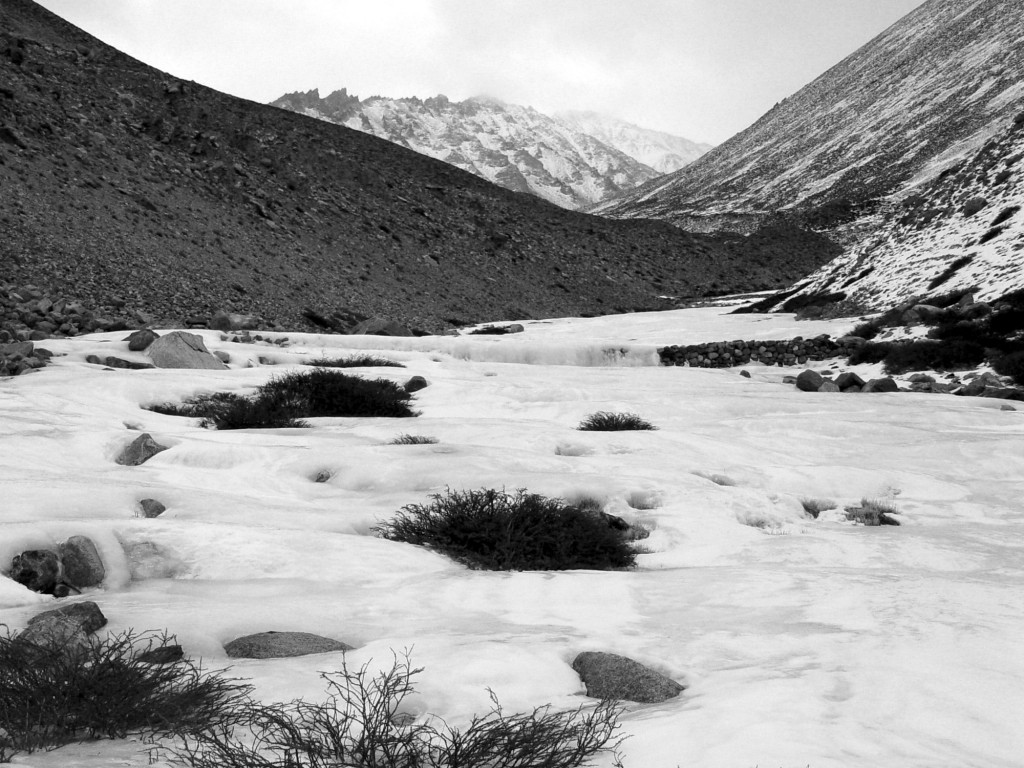
Phutse glacier. The first one that Norphel built. This is the largest artificial glacier that took several months to build.
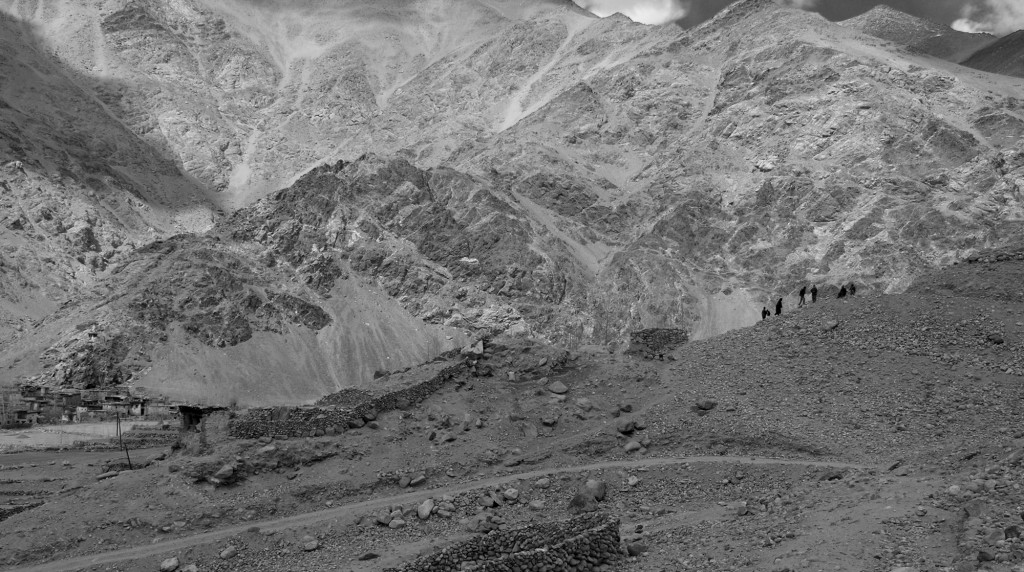
A view of the rugged mountain range in Sharnu. Its thirst is quenced by the Phutse artificial glacier.
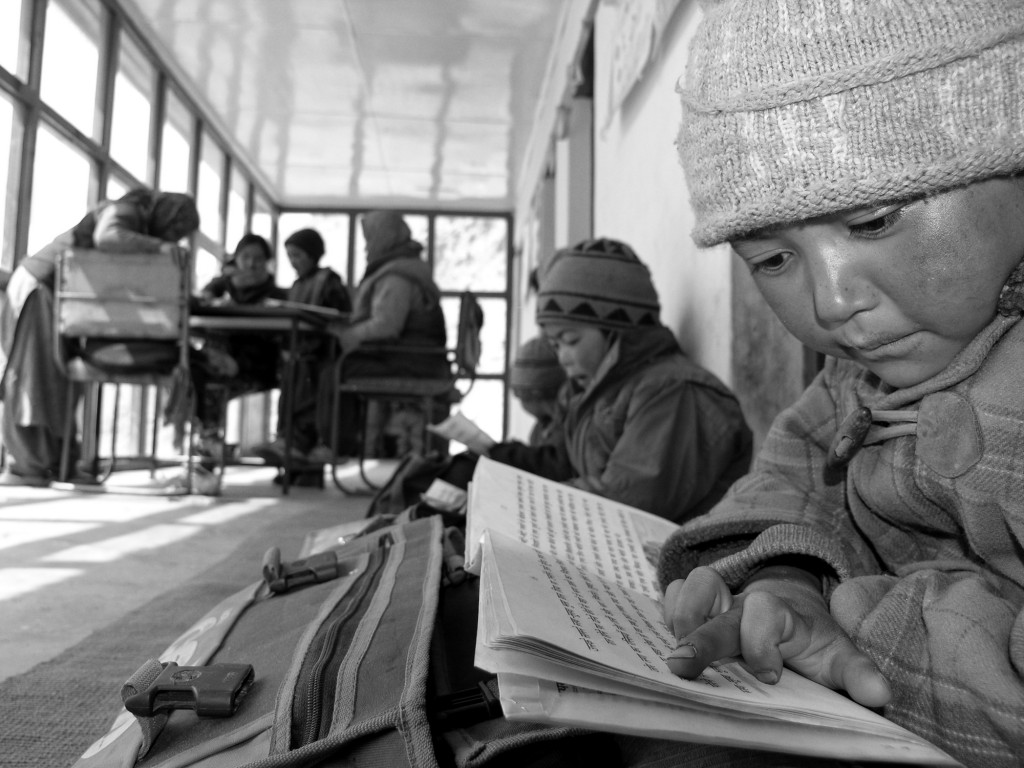
Governemnt run elementary school in Phu valley, enroute to Phutse glacier. It helps the people of several villages downstream including Phu.
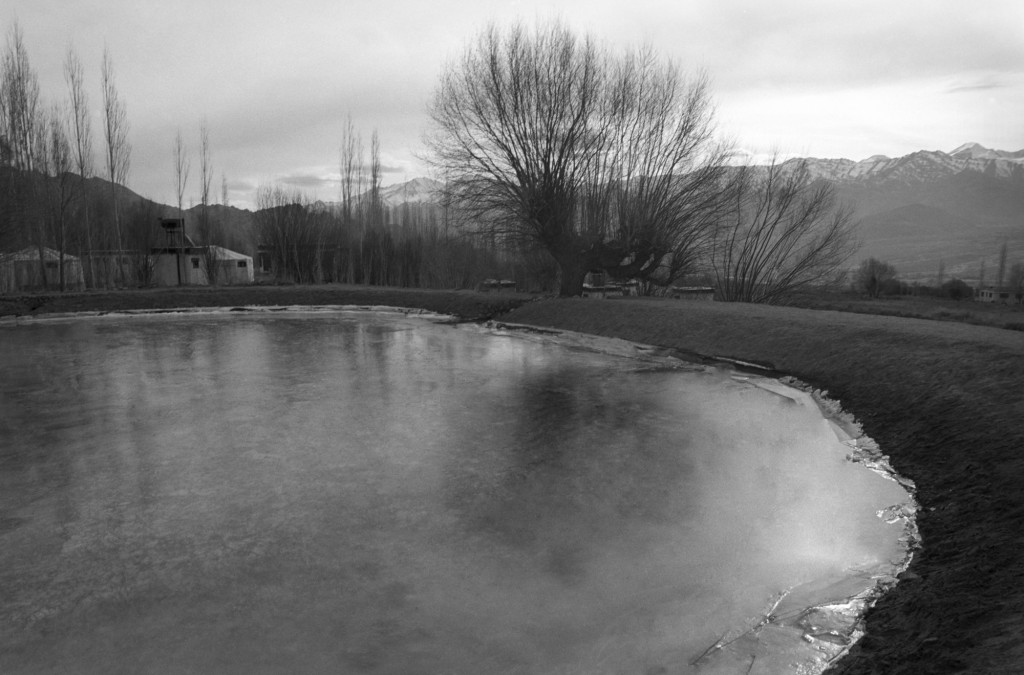
A “Zing” or a reservoir in Phey village near Leh. It collects the water from the artificial glacier as they melt at the onset of summer and flow down. This water is used for agriculture.
